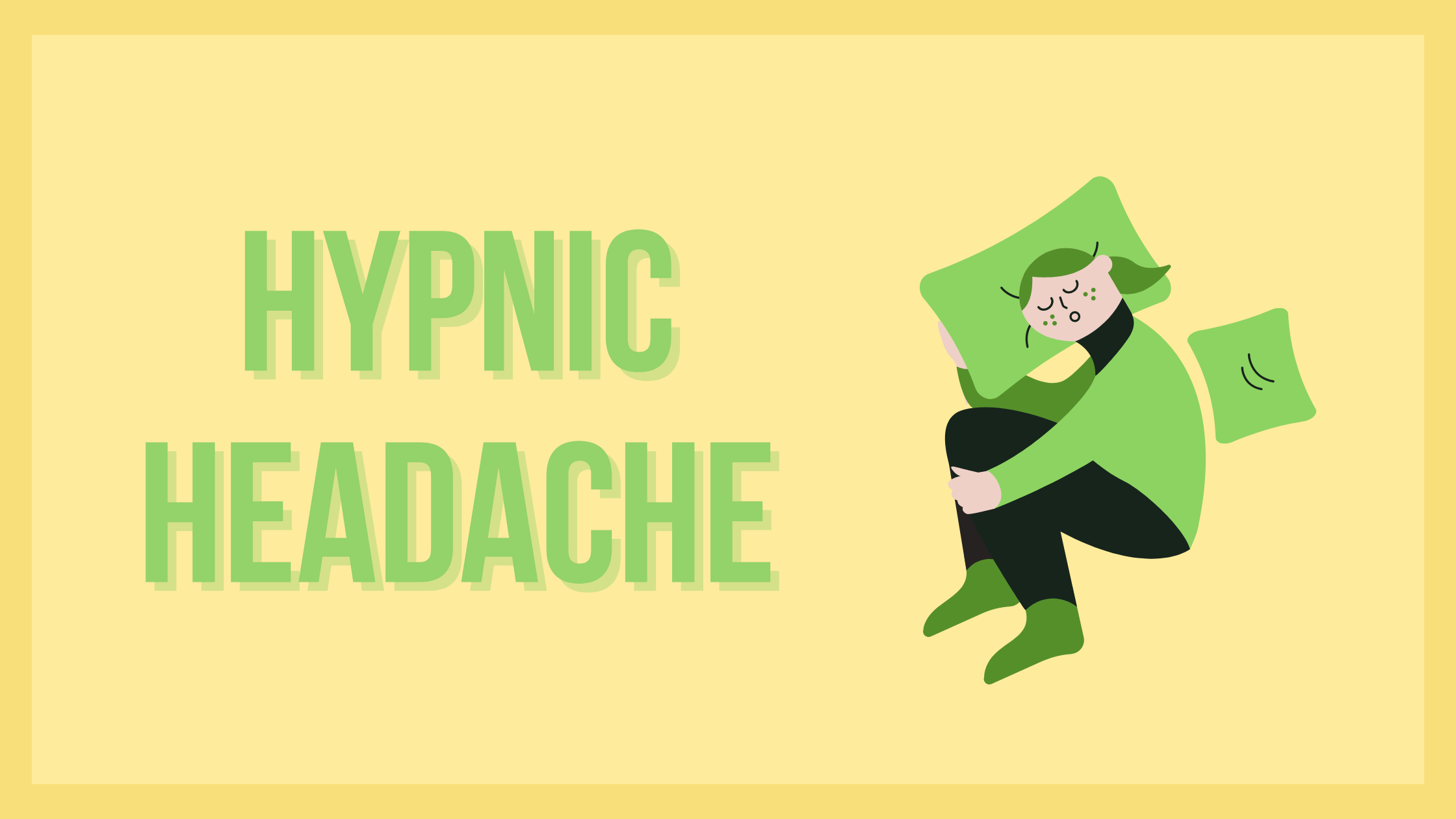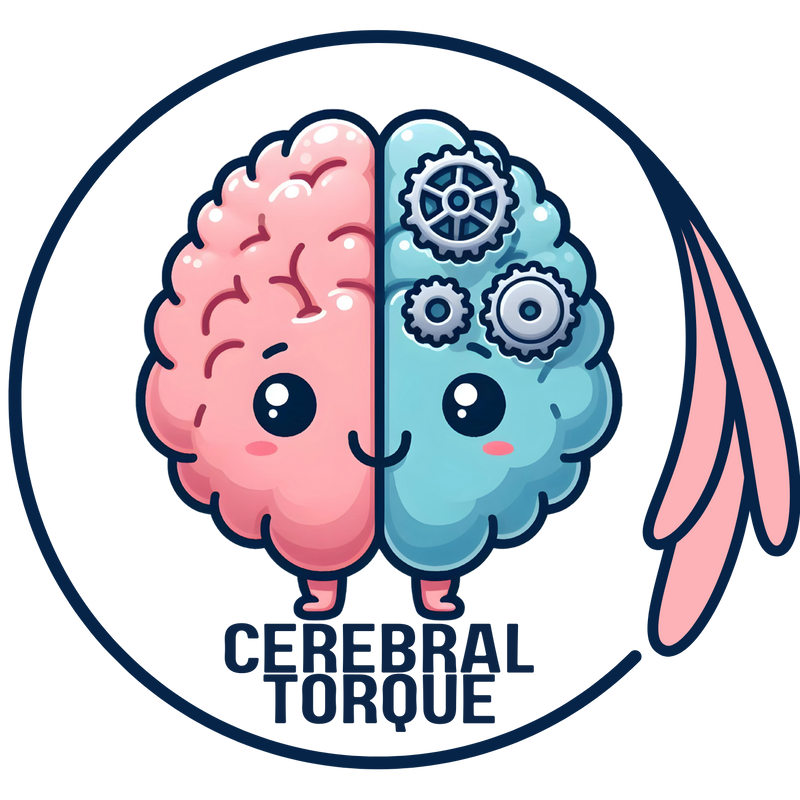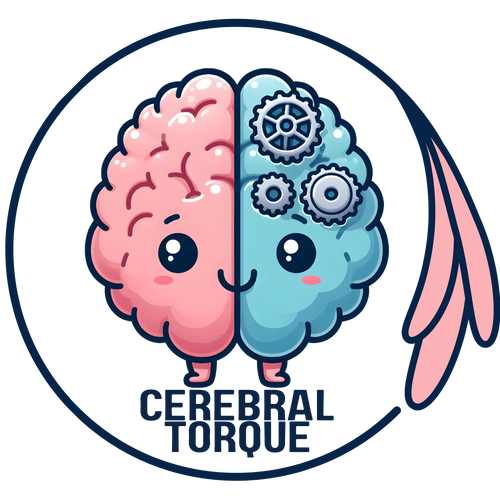Everything You Need To Know About Hypnic Headache
Posted on August 10 2023,

The below isn't medical advice, but educational knowledge to go prepared with when meeting with your neurologist.
What is a hypnic headache?
Hypnic headache, previously termed “alarm clock” headache, is an uncommon primary headache disorder that is underdiagnosed and poorly characterized. They consist of headache attacks that occur only during sleep that are usually described as dull in quality. The pain of hypnic headache is typically mild to moderate in intensity but about 34% of patients report severe pain. Attacks are usually bilateral and last 15 to 180 minutes, though even longer durations occur. Most cases are chronic with headaches near-daily, but an episodic subtype can happen. Although classically tension-type-like in quality, migraine features and nausea have been reported by some patients. Hypnic headache onset is not related to specific sleep stages. MRI studies show that there is gray matter volume loss in the hypothalamus thereby suggesting a hypothalamic pathology. First-line treatments inclide indomethacin and caffeine.
What are the diagnostic criteria for hypnic headache?
The International Classification of Headache Disorders 3rd edition (ICHD-3) provides the following diagnostic criteria for hypnic headache:- A) Recurring headache attacks fulfilling criteria B through E
- B) Developing only during sleep, and causing awakening
- C) Occurring ≥10 days per month for >3 months
- D) Lasting ≥15 minutes and up to 4 hours after waking
- E) No cranial autonomic symptoms or restlessness
- F) Not better accounted for by another ICHD-3 diagnosis
At what age does hypnic headache occur?
Hypnic headache typically begins after age 50, but it may still occur in younger people. It predominantly affects women, with a female to male ratio of about 2:1. The incidence and prevalence are unknown, since it is rare. In studies, hypnic headache comprises 0.07-0.35% of cases. Among elderly patients with headache, the prevalence ranges from 1.4-1.7%.
What is the pathophysiology of hypnic headache?
The underlying cause of hypnic headache is unclear. Neuroimaging studies reveal involvement of the posterior hypothalamus, a brain region also believed to be involved in cluster headache. However, most hypnic headache attacks arise from non-REM rather than REM sleep. This is in contrast with the REM-predominant headaches like cluster headache. The cyclicity and response to lithium also suggests dysfunction of hypothalamic circadian rhythms may play a role.
What are the symptoms of hypnic headache?
Hypnic headache causes moderate, dull, throbbing head pain that awakens the patient from sleep at least 10 days per month. In a literature review, it was found that 60% of patients described moderate pain intensity, 34% had severe pain, and 6% had mild pain. Most patients (68%) experience bilateral head pain. Attacks last at least 15 waking, with a mean duration of 162 minutes. The average frequency of attacks was 21 days/month. Migraine symptoms like nausea (21%) or photophobia/phonophobia (7%) may be present. Trigeminal autonomic symptoms like rhinorrhea, lacrimation, and ptosis occur in <10% of cases.
How do you diagnose hypnic headache?
It is important to distinguish hypnic headache from other trigeminal autonomic cephalalgias, especially cluster headache because the treatment differs. Other potential causes of headache during sleep that result in awakening must also be ruled out before diagnosing hypnic headache. This includes sleep apnea, nocturnal hypertension, hypoglycemia, medication overuse/adaptation headache, and intracranial disorders. However, sleep apnea does not prevent a diagnosis of hypnic headache from being made, as both disorders can coexist. Neuroimaging helps rule out secondary causes, while sleep studies may be needed to assess for sleep apnea. For full diagnostic criteria, see above.
What is the treatment for hypnic headache?
First-line treatments with some evidence of efficacy include caffeine (40 to 60 mg at bedtime [QHS]) and indomethacin (50 mg three times a day [TID]). If patients don’t respond or respond poorly, lithium may be used as second-line. Other medication options include:
| Medication | Dosage |
|---|---|
| Melatonin | 3 mg at bedtime |
| Topiramate | 25 to 100 mg daily |
| Flunarizine | 5 mg at bedtime |
| Lamotrigine | 25 to 75 mg daily |
| Sodium ferulate | 75 to 300 mg daily in 3 divided doses |
| Frovatriptan | 2.5 mg at bedtime |
| Prednisone | 25 mg daily x 15 days, then 12.5 mg daily x 15 days |
| Sumatriptan | 40 mg as needed for acute attacks |
| Atenolol | 25 mg at bedtime |
| Aspirin + caffeine | 325 mg aspirin + 40 mg caffeine at bedtime |
What is the prognosis for hypnic headache?
Hypnic headache follows a chronic course, often lasting for years. However, nearly 50% of patients achieve complete remission of headaches, while only 3% remit spontaneously without therapy. Unfortunately, 7% of patients relapse after remission. The average time from symptom onset to diagnosis is about 5 years.Wed, Apr 23, 25
Effectiveness and Tolerability of Atogepant (Qulipta) in the Prevention of Migraine
STAR study shows atogepant (Qulipta) effectively reduces migraine days by 56.6% in real-world clinical practice, even for patients with previous treatment failures. Learn about this breakthrough.
Read MoreWed, Apr 23, 25
Impact of Visual Stimulus Complexity on Associative Learning in Migraine Patients
Groundbreaking research reveals how migraine patients process visual information differently. This 2025 study found that migraine patients take longer to process simple visual stimuli compared to complex images, which is...
Read MoreSat, Apr 19, 25
FDA Authorizes First Digital Therapeutic for Migraine
In a development for migraine patients, the FDA has granted marketing authorization to CT-132, making it the first prescription digital therapeutic specifically designed for the preventive treatment of episodic migraine...
Read More
